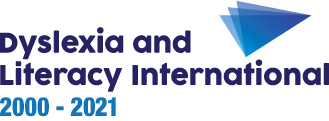Using reading and spelling cards




One of the best tools frequently used in multisensory methods is a set of reading and spelling cards.
These cards really help to build the automatic association between ‘letter(s)’ and ‘sound(s)’. In this way, they act as powerful memory triggers as well as tools for ‘overlearning’.
Reading cards
The teacher presents a card on the front of which the target ‘letter’ is printed in upper and lower case (e.g. < t > and < T >).
The next step is to ask the children to draw a picture on the back of the card of something whose first ‘sound’ corresponds to the target ‘letter’ (e.g. a table).
Spelling cards
On this card, which has a different colour, the target ‘letter’ is printed in cursive style, as well as the keyword.
Here are some examples of reading cards:

As it often happens in English, the same sound may be spelt in different ways, for example [ f ] as in < fun >, < cliff > or < phone >. This is what to do:
- – when the correspondence is taught for the first time, only the ‘letter’ most frequently associated with the ‘sound’ is used, in this example < f >
- – next, when the second most frequent correspondence, [ f ] – < ff >, has been taught in a multisensory way, < ff > is added to the reading card beside the < f > already in place
- – later, when [ f ] – < ph > has been appropriately taught, < ph > is added to the other two
- – finally, the least frequent correspondence is seen as an exception later on, and is not necessarily added to the card
Here are some more examples of spelling cards, as well as the three cards corresponding to the progression just described for [ f ].

The spelling card corresponding to ‘sounds’ which are spelt differently in different positions in words is usually divided into three columns (beginning or open syllable, middle, end).
For example, [ â ] is usually spelt
- < a > (< acorn >) at the beginning of words and in open syllables
- < ai > (< train >) or < eigh > (< eight >) in the middle of words
- and
- < ay > (< tray >) at the end of words
Then you teach the less common correspondences and add them to the card, for example:
- < ei > in the middle of words (< reign >)
- and
- < ey > at the end of words (< grey >)
One can also make ad-hoc reading and spelling cards for more challenging correspondences. For example:
- some children have problems in reading or spelling groups of consonants
- < cl > for [ kl ] and < spr > for [ spr ], and so on
- others have difficulties with some common final syllables
- < -tion > for [ -shun ] as in < portion >
- < -ies > for [ -eez ] as in < babies >, and so on
The cards for each lesson can be gathered into packs, the ‘reading pack’ and the ‘spelling pack’, for systematic and rapid revision.
The ‘reading pack’ is put in front of the child. For each card:
- the child says the key-word
- the child says the ‘sound’ corresponding to the ‘letter’ shown
- the child turns over the card and looks at the picture to check whether he or she is right
Here is Joshua revising the reading pack for the correspondences which he has already been taught.
The ‘spelling pack’ is used by the person helping the child. For each card:
- – the helper says the pure, isolated ‘sound’
- – the pupils repeat the ‘sound’ and say the name of the grapheme (group of letters in this case), for example [ ch ] is < c > and < h >
- – at the same time, the pupils write the grapheme in cursive script, preferably on lined paper
Here is Joshua revising his spelling pack.
In due course cards which are mastered are taken out of the packs, and new cards are added. The packs should normally have between 30 and 50 cards.
If possible, review the packs with children with dyslexia every day, or at least three times a week. This only takes a few minutes.
Alternatively, ask the children to revise the cards with their parents or the ‘home’ support network as often as possible. But do take care that the instructions for use are clearly explained: write down the steps to be followed and always stress the importance of pure, isolated sounds. In particular, be sure to make ‘home’ aware that the ‘sounds’ have to be pronounced in isolation, if it is helping the child revising his or her reading and spelling pack.


